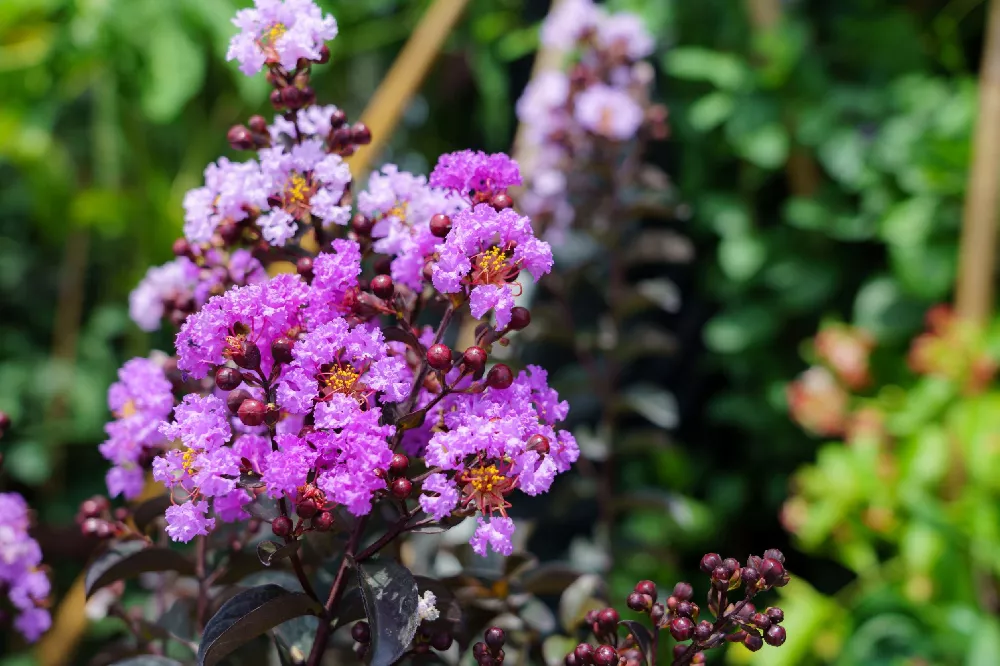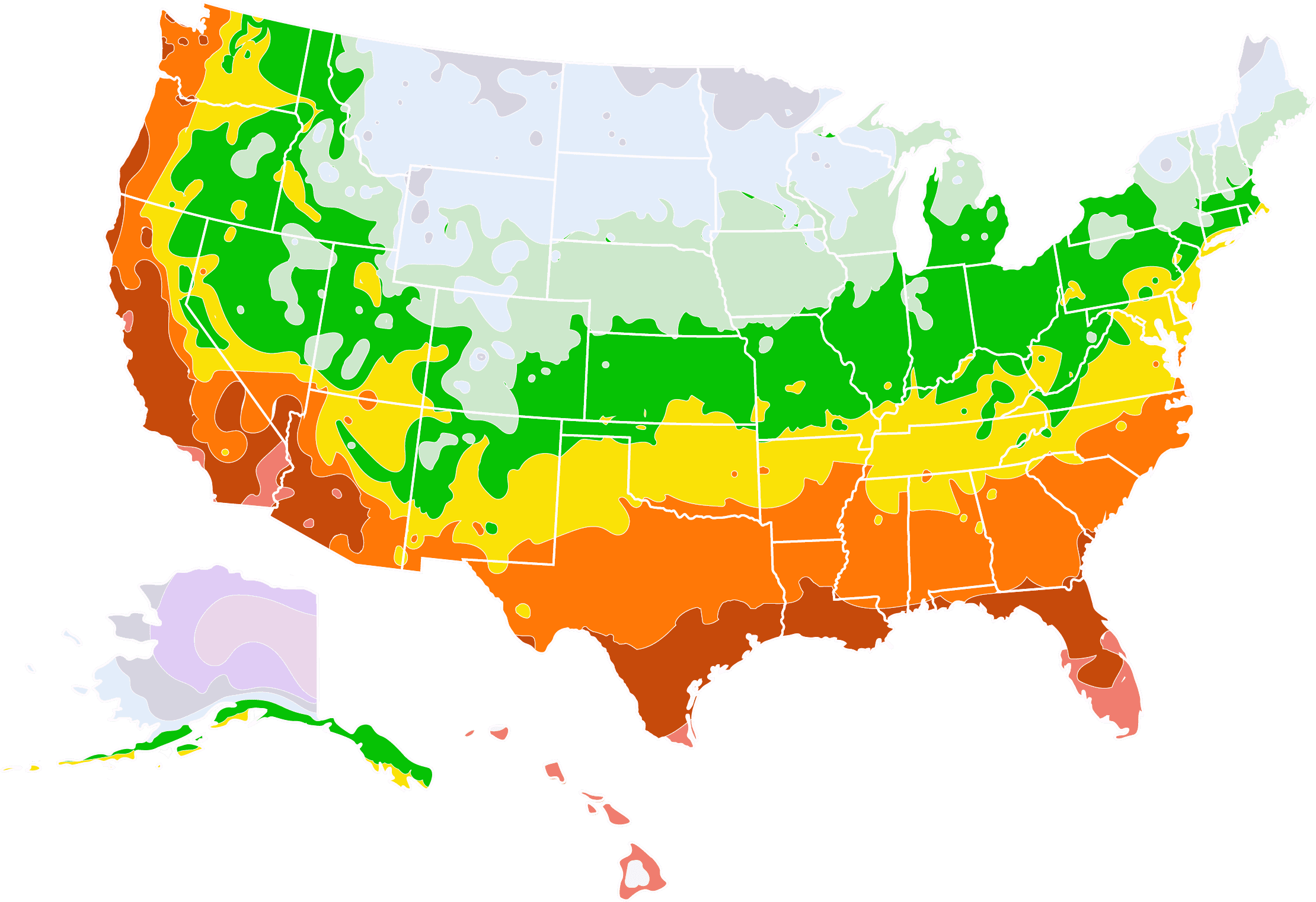- Home >
- Ornamental Trees >
- Thunderstruck™ Lavender Blast™ Crape Myrtle Tree
Thunderstruck™ Lavender Blast™ Crape Myrtle Tree for Sale - Buying & Growing Guide
- Ships in 1-2 days
- 1-Year Warranty Eligible
- Pots or accessories are not included unless specified in the product options.
Shipping Details:
Once your order is shipped, you’ll receive an email with a tracking number and estimated delivery date. Most orders ship immediately, but some items are seasonal and may only ship in spring or fall. These products are noted on the website.
There are very few ornamental plants that can add as much rich color to your landscape as the Thunderstruck™ Lavender Blast™ Crape Myrtle Tree. Known botanically as Lagerstroemia x 'JM3' PPAF, this unique crape myrtle sets its vibrant lavender blooms against leaves that are nearly black, making for an incredibly striking contrast. Those fantastic colors will remain present from early summer all the way through the growing season until the first frost arrives.
- The Thunderstruck™ Lavender Blast™ Crape Myrtle Tree has bright lavender blooms.
- The leaves of this plant are nearly black, which makes for great contrast.
- This tree is easy to care for and offers color for most of the growing season.
Plant Care
Sunlight

Grow your Thunderstruck™ Lavender Blast™ Crape Myrtle Tree in an area that receives six hours of direct sunlight or more per day.
Watering
Water this tree one to three times per week during the establishment period. After establishment, water once per week during summer.
Fertilizing

Fertilize annually during the early spring using a general-purpose fertilizer.
Planting and Care
Planting instructions
The planting hole you dig for your Thunderstruck™ Lavender Blast™ Crape Myrtle Tree should be as deep as the root ball is tall and at least twice as wide. Before planting, loosen the sides of the root ball and the sides of the hole to encourage root expansion. Backfill with nutrient-rich soil while providing plenty of water. The location in which you plant should receive full sunlight and will ideally have soil with good drainage. Finish your planting job by covering the area with a layer of organic mulch.
Watering and nutrients
Once you have successfully planted your Thunderstruck™ Lavender Blast™ Crape Myrtle Tree in the ground, you should water it regularly to maintain consistent soil moisture throughout the establishment period. Typically, this means watering one to three times per week throughout most of the first growing season. After the first growing season, you should water your Thunderstruck™ Lavender Blast™ Crape Myrtle Tree about once per week during the spring, summer, and early fall. You can also fertilize this plant once per year in spring, using a balanced fertilizer such as one that has a 10-10-10 nutrient ratio.
Pollination
The Thunderstruck™ Lavender Blast™ Crape Myrtle tree is a self-pollinating species that blooms during the spring and holds its flowers for several months. While the flowers are present, they will attract a multitude of pollinator insects. Those insects are responsible for moving pollen from the male plant organs to the female ones. However, when caring for your Thunderstruck™ Lavender Blast™ Crape Myrtle Tree, you won’t need to worry about pollination at all since this plant does not produce an edible harvest or fruits that hold significant ornamental value.
Pruning
Any time you prune your Thunderstruck™ Lavender Blast™ Crape Myrtle Tree, you should use tools that are both sharp and sterile to reduce the risk of disease spread. Pruning should take place during the early spring as this plant is entering its active growth phase. When pruning, remove any branch that is diseased, dead or damaged. You can also perform some light shaping as well at this time. Fortunately, since this plant blooms on new wood, pruning in early spring will not result in the removal of the season’s flowers.
Pests, diseases and animals
There are a few common problems that can befall a Thunderstruck™ Lavender Blast™ Crape Myrtle Tree. The insects that are most likely to infest this plant include Japanese beetles and aphids. Regarding disease, complications such as sooty mold and powdery mildew can arise. Fortunately, many of these disease issues are avoidable through proper pruning and general care such as thinning the canopy of this plant—which can help improve air circulation and reduce the odds of a moisture-related infection.
Achieving maximum results
One fantastic quality of the Thunderstruck™ Lavender Blast™ Crape Myrtle Tree is that this plant has excellent drought tolerance. As such, this plant can adapt to growing locations that are relatively dry and may not offer enough moisture for most other popular ornamental trees. Additionally, the small stature and the vibrant colors of the Thunderstruck™ Lavender Blast™ Crape Myrtle Tree make this plant an ideal option for smaller planting locations that are in desperate need of some color and intrigue.
FAQs
How large does the Thunderstruck™ Lavender Blast™ Crape Myrtle Tree grow?
The Thunderstruck™ Lavender Blast™ Crape Myrtle Tree grows as a small tree that reaches a height of 12 to 15 feet tall at maturity. The mature spread of this plant often reaches about 10 to 12 feet wide. This smaller size is advantageous to many gardeners who don't have a large growing space. In those cases, the Thunderstruck™ Lavender Blast™ Crape Myrtle Tree is often the perfect plant choice.
How long do crape myrtles live?
The life span of a crape myrtle tree can vary greatly. The location in which these plants grow, the care you provide, and the specific cultivar that you grow will all determine how long your crape myrtle's lifespan will be. At times, a crape myrtle may only live for 25 years, even while receiving proper care. In other instances, crape myrtle can live for more than a century.
When will a crape myrtle be old enough to bloom?
If you plant a young crape myrtle tree, you may be concerned at first that your plant has not bloomed. The reason for this is often because your plant is simply too young, rather than some more dire complication. Typically, these plants must grow for about three to five years before they reach an age at which they are mature enough to flower. Once they reach a flowering age, your crape myrtle will continue blooming annually until it dies.
Compare Similar Products
You can't add more Product Name - Product size to the cart.
OK






